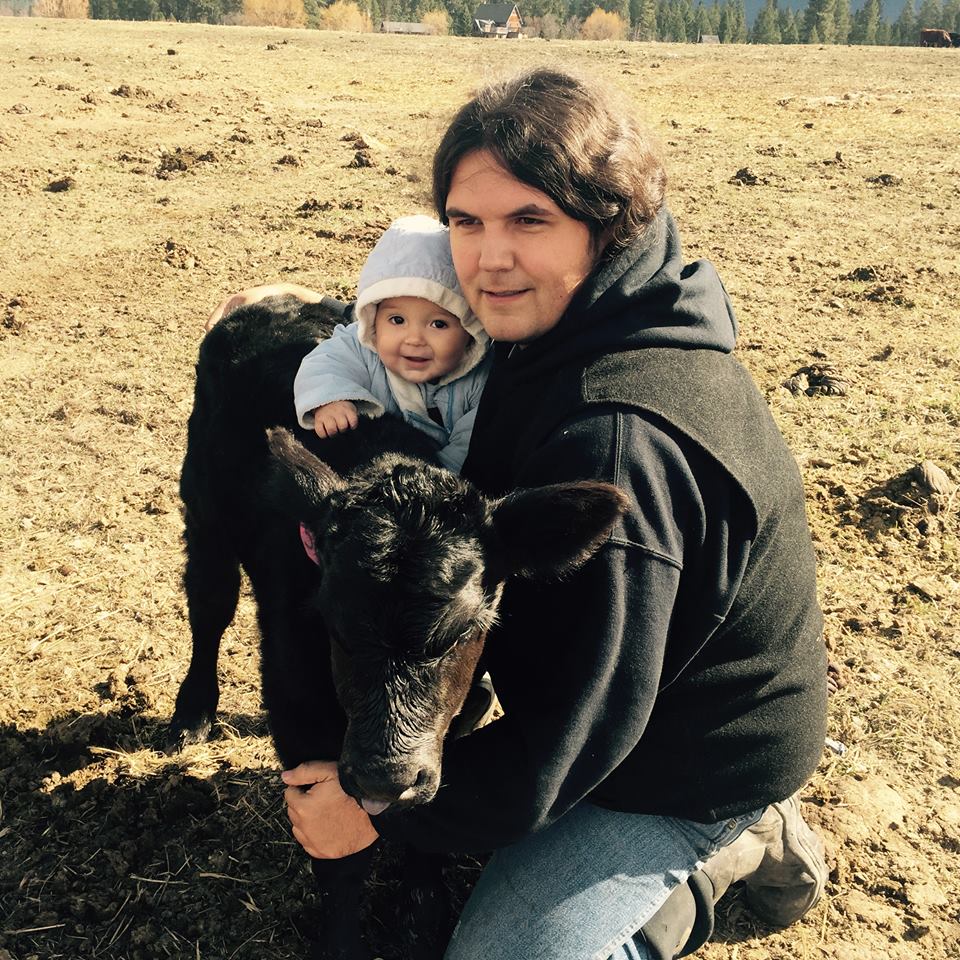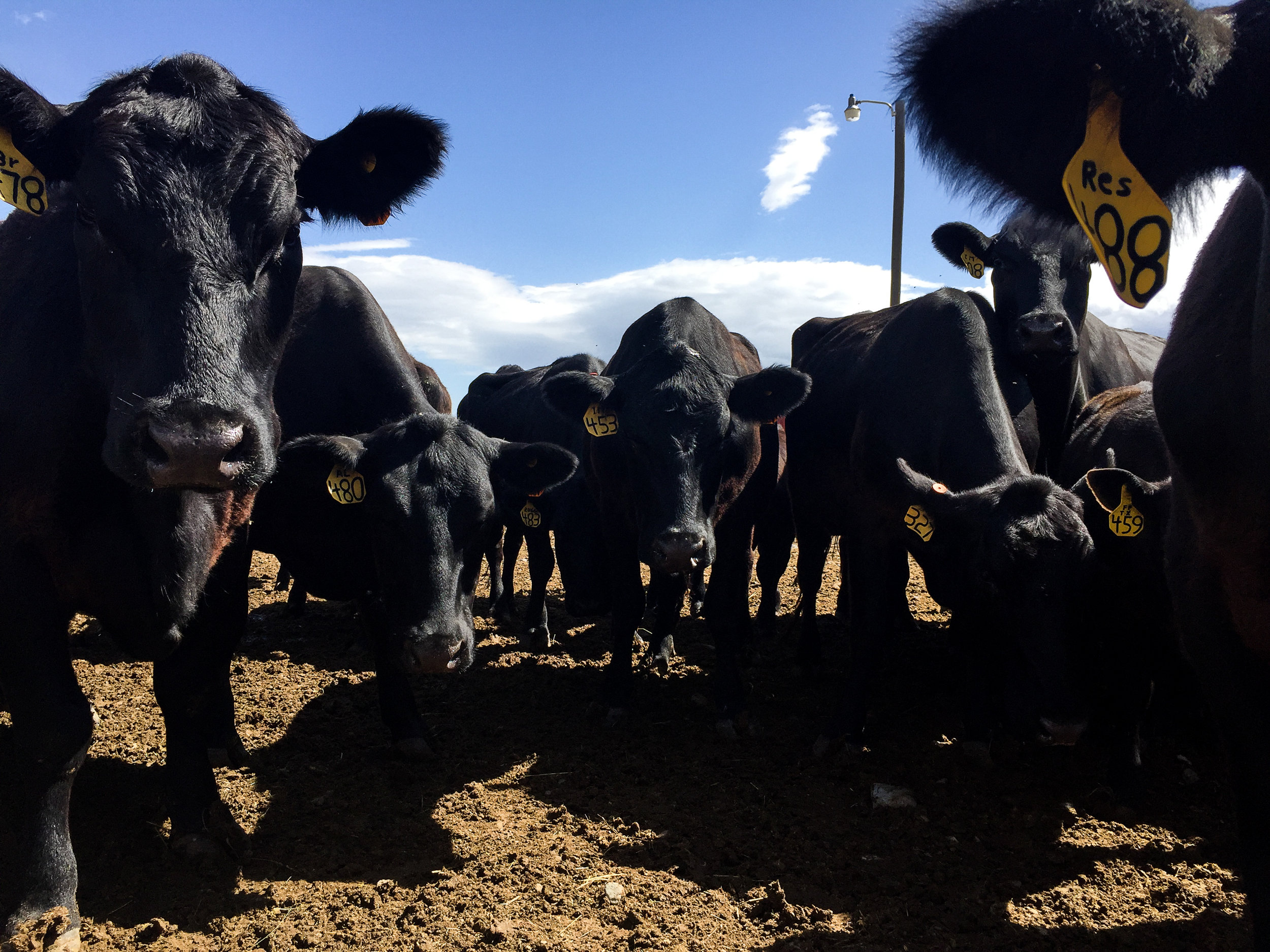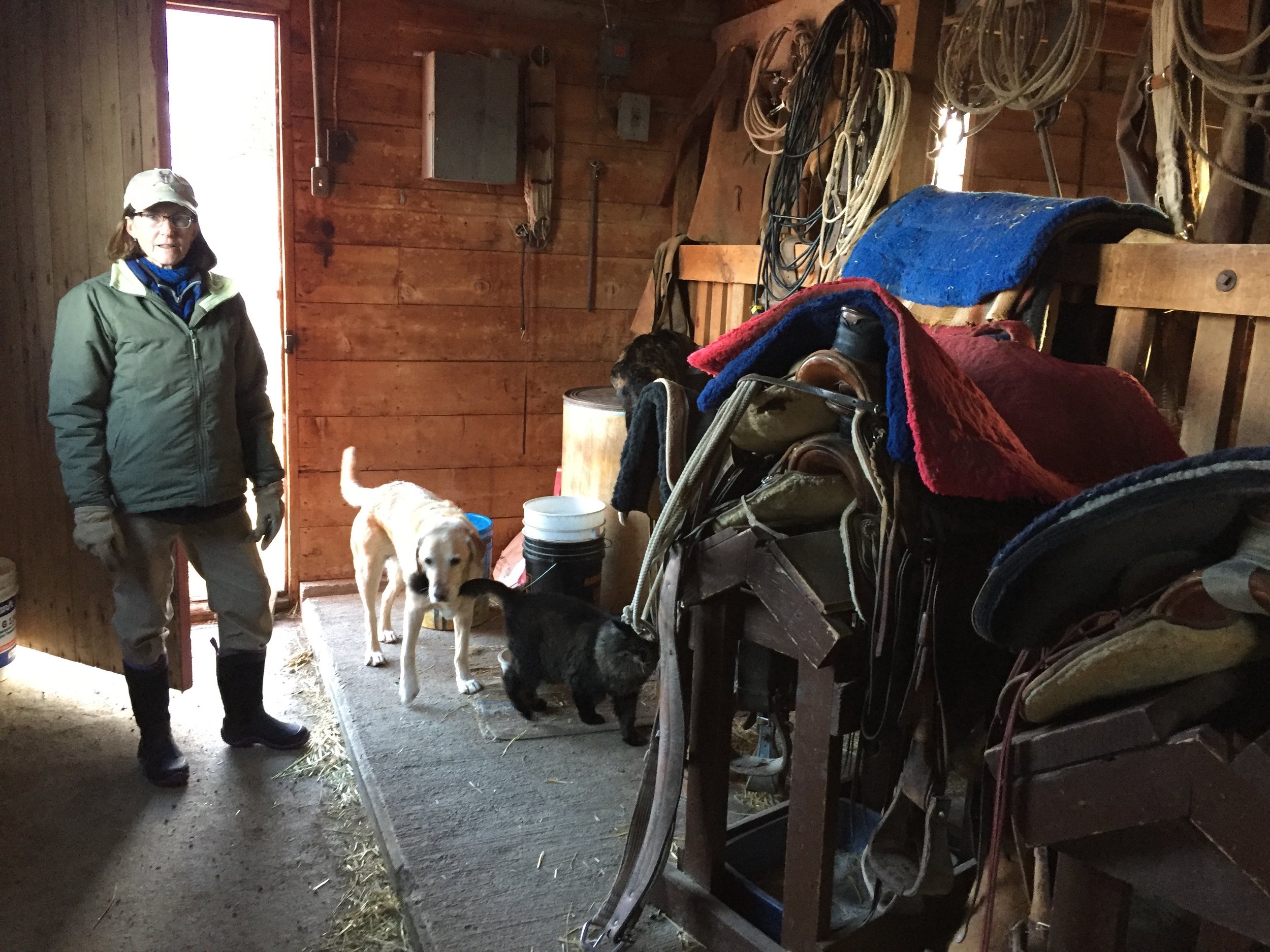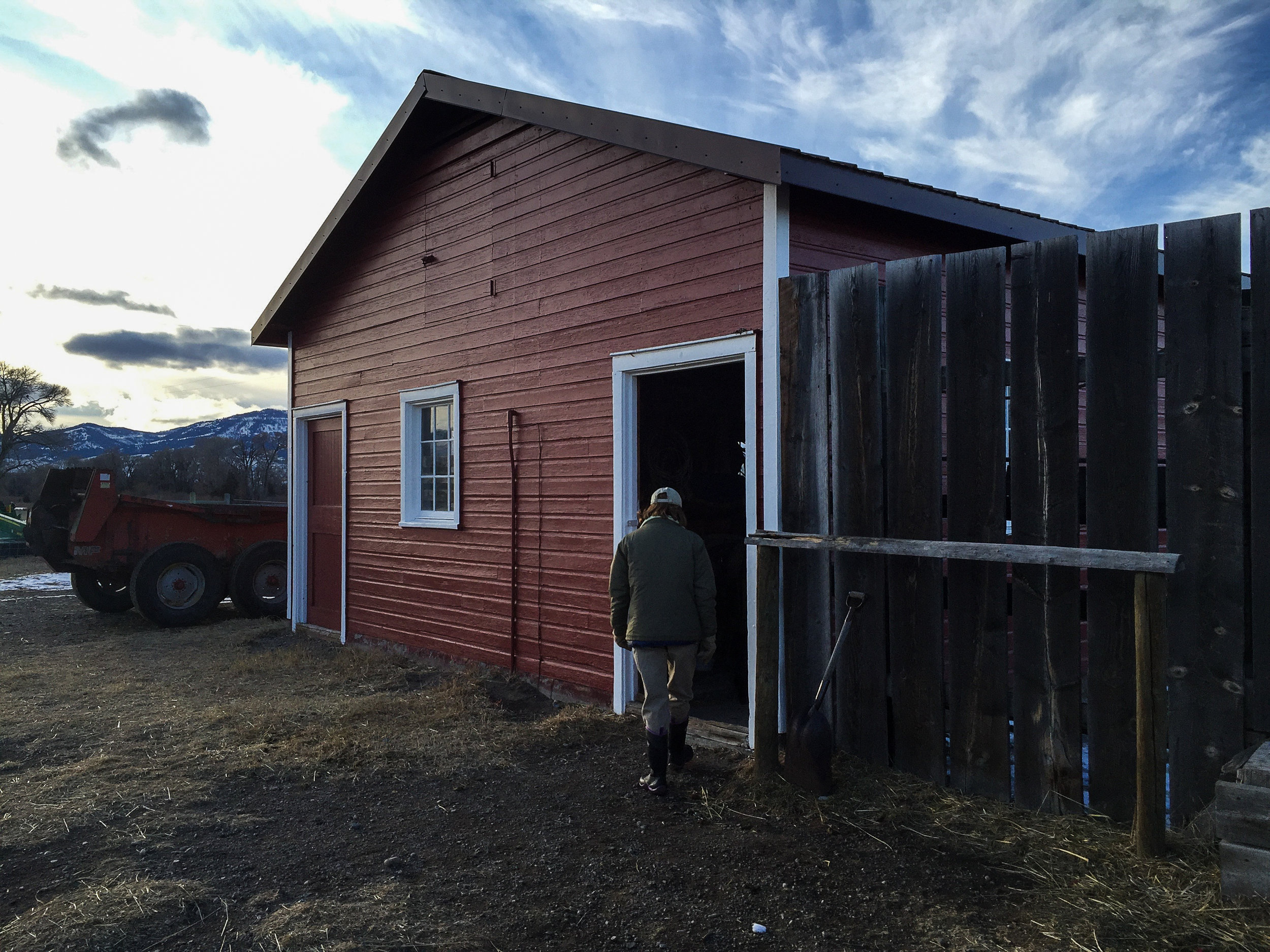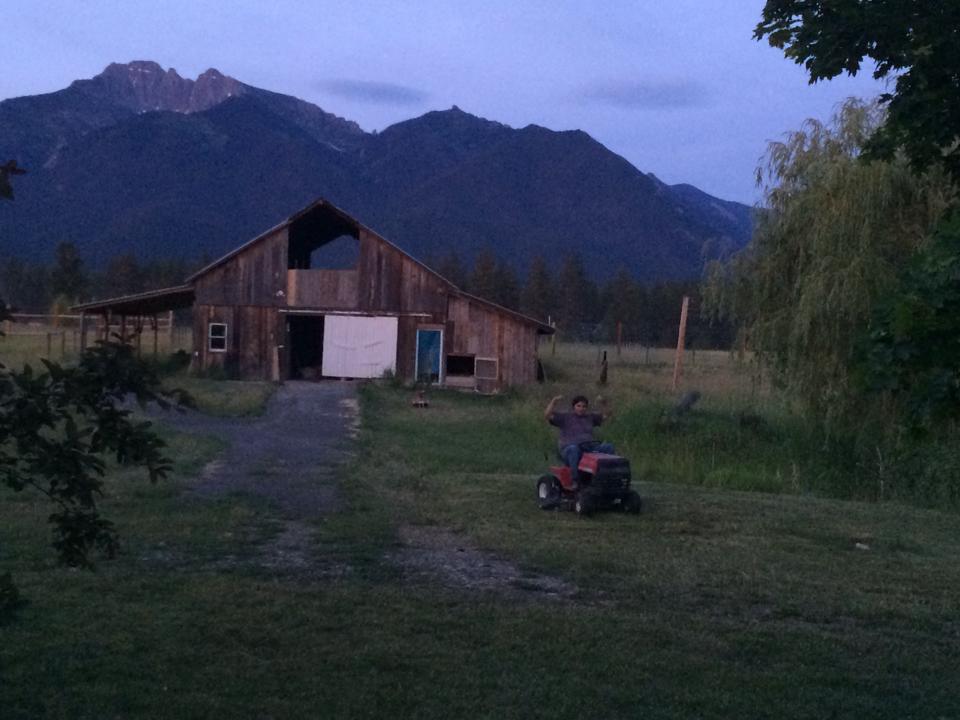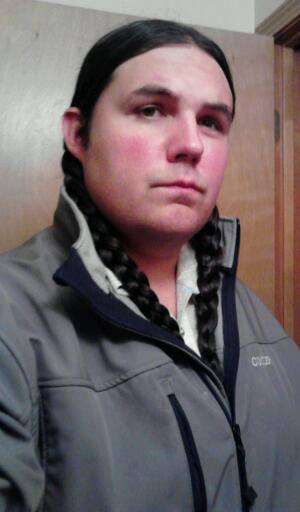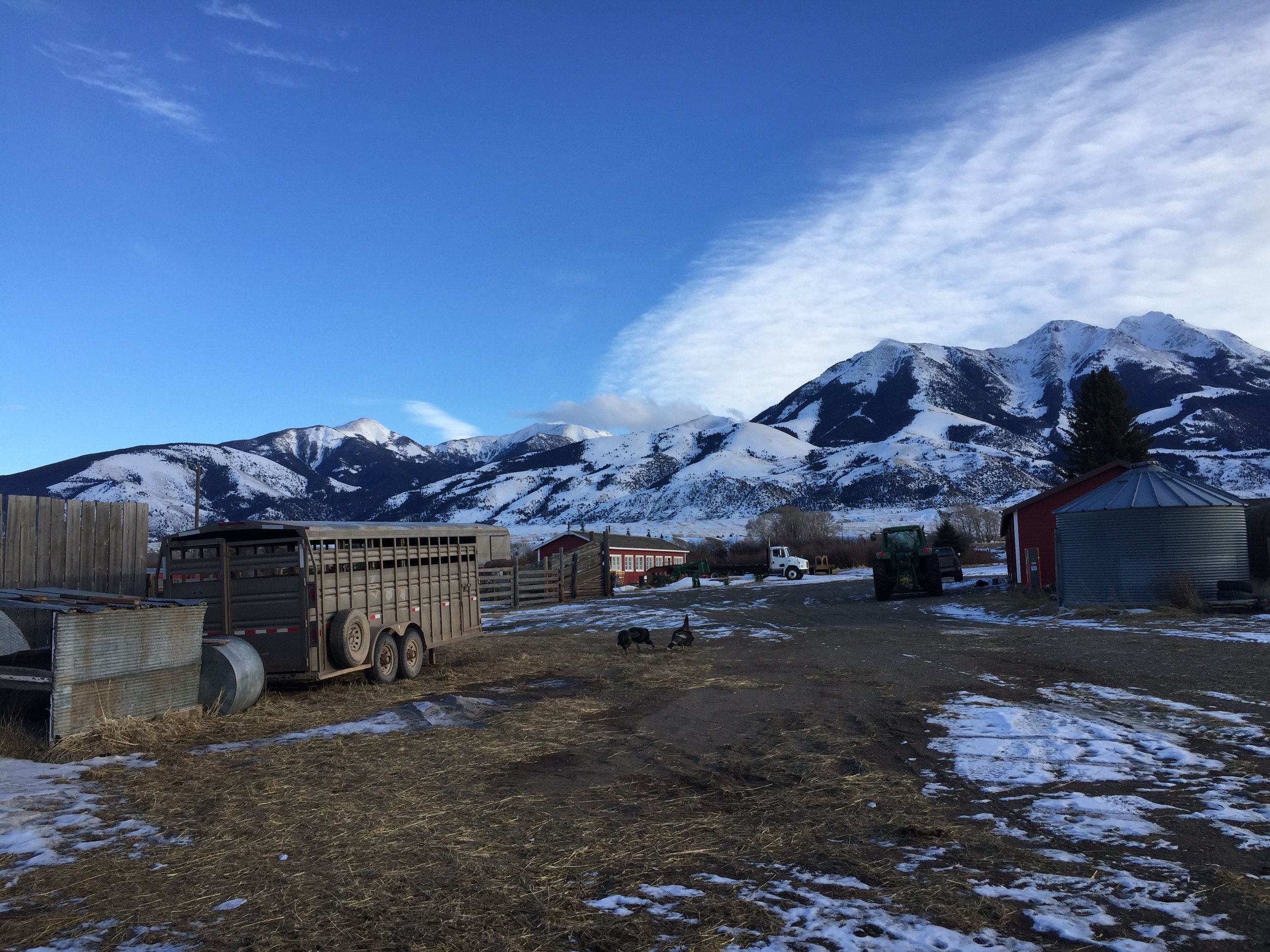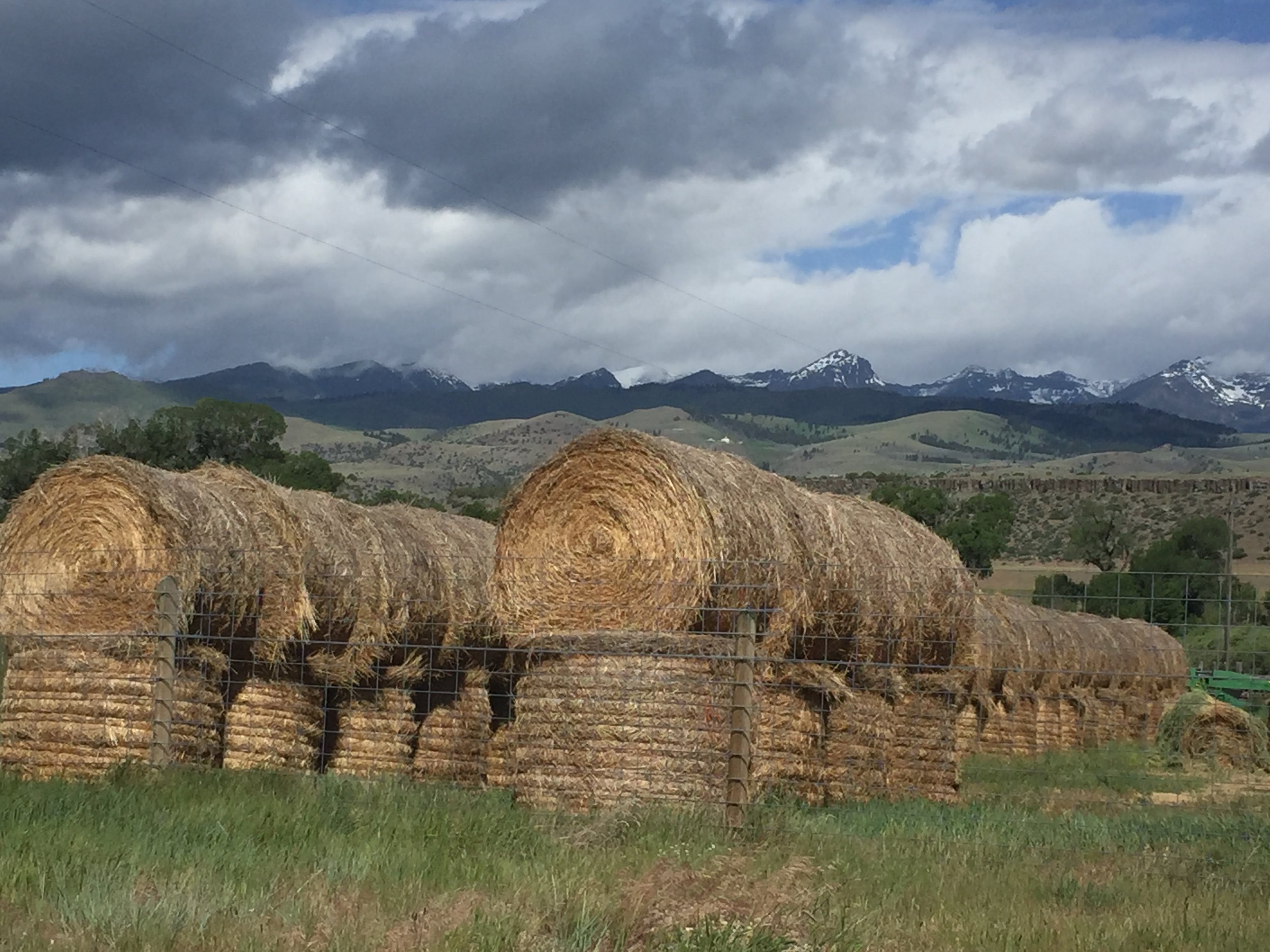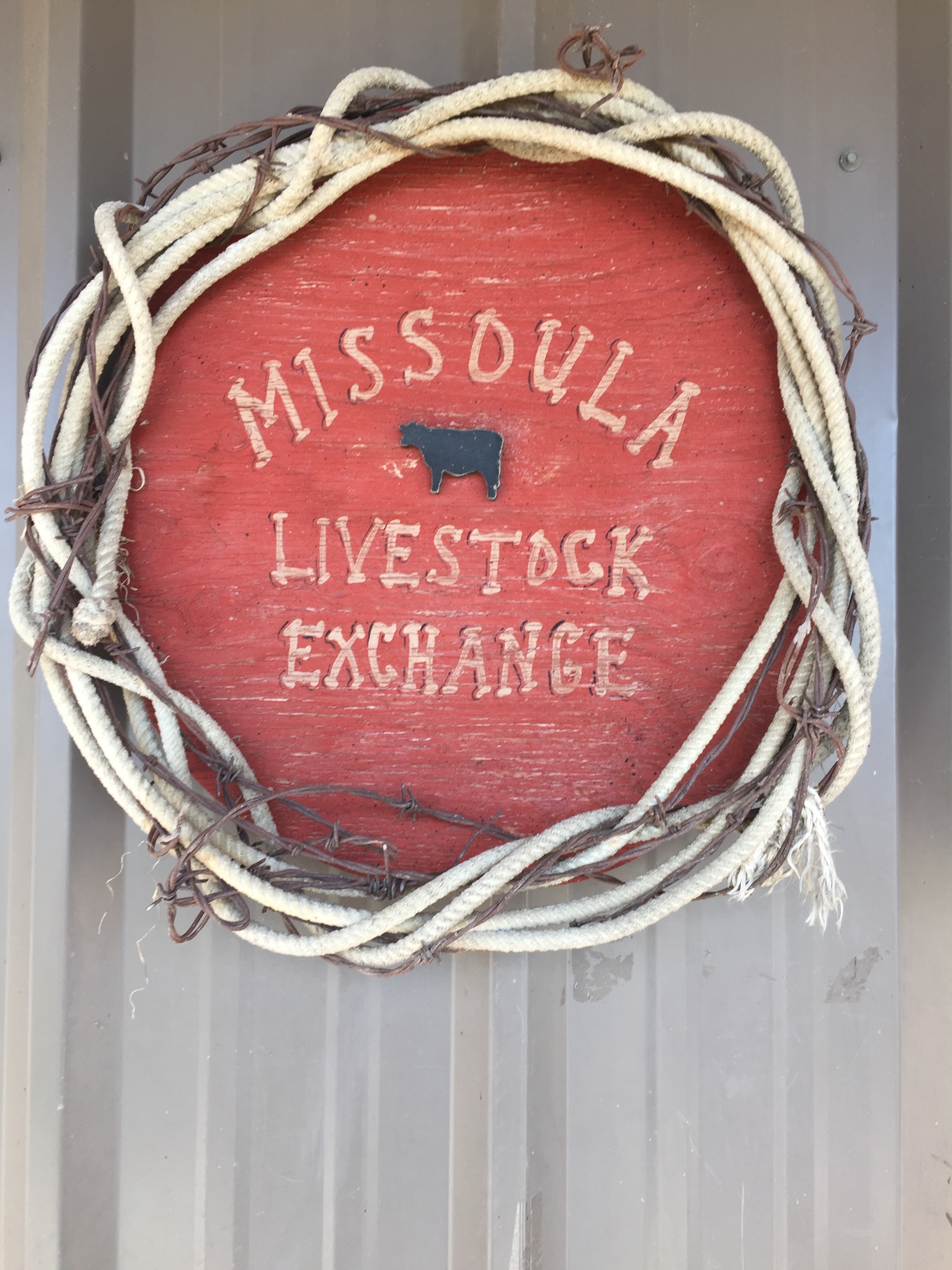Season 1: Episode 3
Born Free
Many cattle ranchers view wild bison as a threat to their livelihoods. But some think cattle and bison can coexist. In this episode, you'll meet two cattle ranchers with different perspectives on wild bison.
We'll also take you on a controversial bison hunt happening at the border of Yellowstone National Park.
Read More
4-H
In 4-H, kids complete hands-on projects in areas like health, science, agriculture and citizenship, in a positive environment where they receive guidance from adult mentors and are encouraged to take on proactive leadership roles.
FFA
Future Farmers of America is an intracurricular student organization for those interested in agriculture and leadership.
More information on brucellosis
Video Extras
Credits
Threshold is produced by Amy Martin, with help from Nick Mott, Zoe Rom, Jackson Barnett, Nora Saks and Josh Burnham. Music by Travis Yost.
Transcript
[00:00] INTRODUCTION
AMY: It's not quite dawn yet. The wind is blowing pretty hard and it's cold, although not as cold as it could be. And...I'm heading out to go watch the bison hunt.
MUSIC
AMY: Welcome to Threshold. I’m Amy Martin, and for this third episode, we’re going back to Yellowstone National Park.
AMY: So I'm following another truck out to the line... where the national park meets national forest and where it's legal to hunt and when I was driving through this area yesterday. There were over two hundred bison moving through it...
AMY: This first season of our show is all about the American bison – this animal that we venerate as a symbol, but don’t really know what to do with in real life. We saved them from extinction, and then we kind of forgot about them. But here, on the borders of Yellowstone National Park, they’re not letting us forget any longer.
AMY: I'm just seeing the first buffalo of the day but they are on the other side of the river. And they’re right next to the road and I don't think they can be shot over there –
AMY: In case you’re just joining us, here’s what we’ve covered so far. In episode 1, we got an overview of the Yellowstone situation. In a nutshell, bison want to migrate out of the park, and that’s generating controversy. Then in episode 2 we went back in time, and explored how the near-extermination of buffalo was part of the violent oppression of Native people. Now we’re going to start to weave all of this together, and look at bison through the eyes of two cattle ranchers who are contemplating what bison restoration would mean to them. And I’m also going to take you with me on a buffalo hunt.
AMY: There are....one, two, three, four, five, six…. hunters all staring up into the hills. Trying to see I guess if something’s moving up there. Which makes me think it probably is.
MUSIC: THRESHOLD THEME
“You’ve got blood all over the snow. It was hard.”
“Everybody has this big dream that they’ll free roam and it’s going to be so good for everybody but it’s not.”
“Bison are not allowed to go beyond a certain point and if they do, they are hazed or sent to slaughter.”
“The National Park Service doesn’t want to send bison to slaughter and we don’t want to be in the business of handling wildlife in this way.”
“Buffalo have taken care of Native Americans since the beginning of time.”
“Maybe they don’t even understand agriculture.”
[02:36] SEGMENT A
AMY: Drusca Kinkie lives on a cattle ranch about 30 miles north of Yellowstone, in a place called Paradise Valley.
SOUND: Cows
AMY: It’s easy to see how this area got its name – it’s all snowy peaks, a winding river, big sweeping meadows, like a postcard in every direction. As Drusca showed me around, her dog and several cats and even a family of turkeys circled around her.
SOUND: Turkeys
AMY: Drusca loves animals, and animals love her. It’s not an overstatement to say she’s devoted her life to them.
DRUSCA: When we were little kids, you know the drive-in theaters were big, and so we would always go to the drive in movies. And the movie that we went to see that I remember real clearly was Born Free. And that's where my passion for animals started. And that's what I always wanted to do.
AMY: How old were you do you think when you saw that?
DRUSCA: It was grade school. Early grade school.
AMY: Born Free was a big hit in 1966. It was a true story about a woman who raised an orphaned lion cub and then returned it to the wild in Kenya. Even if you don’t know the movie, you might have heard the song:
MUSIC: “Born Free” orchestral version
AMY: Lots of kids dream of working with animals. Drusca made it happen. She went on to major in animal science, then she traveled to central Africa with the Peace Corps to teach high school students about raising livestock. And when she came home, she earned a master’s degree in reproductive physiology. This no-nonsense, stick-to-it-ness is something she says she got from her mom. Her parents were divorced when she was young, and her mom raised Drusca and her three sisters alone.
AMY: And she was your role model you said.
DRUSCA: Mm-hmm.
AMY: In what ways?
DRUSCA: Well, just being independent and resilient. Knowing that, you know, you just went and did what you were going to do. And there really wasn't any question about “can I.” It was, “OK, I'm going to go do this.”
AMY: Drusca met her husband in graduate school, they moved to the ranch where he grew up, and now they raise cattle here together with their son. I spent several hours with Drusca on two different occasions, and one impression I left with is that her cattle mean much more to her dollars and cents. I could see it on her face when she talked about them, and I could hear it in her voice when she told me the story of her own Montana ranch version of a Born Free. One of her cows had complications while trying to give birth to twins. She and her husband Rich were able to save the calves, but the mother died. So they brought the orphaned brothers onto their enclosed front porch. It’s basically just like a room in their house.
DRUSCA: And that became their home for 12 days. And you had to keep the temperature in there above 85, 90 degrees and so we had a heat lamp going, the stove was roaring and you had to feed him every two days or two hours.
AMY: What does it take to keep two orphaned newborn calves alive? Most Americans have no idea. So I asked Drusca to walk me through some of the details.
DRUSCA: It was hotter than Hades on that porch. And so I am over there feeding them in my shorts and my tank top because it was just so hot. And you know you feed them and then you have to potty ‘em. And so you have to rub their butts and make sure that they know to potty and I wished we would’ve owned stock and paper towels because we would have done well...
AMY: The calves had weird bleeding incidents, one of them develop goiter. They would seem to be improving, and then they would regress.
DRUSCA: You know, it was just up and down and down --
AMY: On day 12, they decided the calves were doing well enough to be moved out to the barn, under heat lamps.
DRUSCA: And they did pretty good, so we grafted one of them to a cow and that went well and he was pretty happy.
AMY: Grafting is when you get a cow to adopt a calf she didn’t give birth to. Sometimes it works, sometimes it doesn’t. Drusca has a lot of experience – she made it work for both of these orphans.
DRUSCA: And then the other one with the goiter. I just kept you know I was feeding him four times a day. So at 2 a.m. every single night I'm down there with bottle and he finally got a mom in May.
AMY: But the story doesn’t end there. The calves lost their hair for a while, they had other mysterious ailments...
DRUSCA: I mean they were just, it was just issue after issue with these guys. But they’re out on grass with their moms, close where we can keep an eye on ‘em. And you know you can still go up to the one...the first one that we grafted, he’s kind of forgotten. But the other one you can go up to him anywhere and he just wants to be petted. And if you scratch his belly he almost rolls over like a dog. (laughter) Before he got his mom he'd follow me up to the house to get fed and you'd open the porch door and he'd come walking in on the porch…
AMY: (laughter) Like, “this is where I was born...”
DRUSCA: And he and the dog would play in the yard.
MUSIC
DRUSCA: So I guess those are the reasons why you do it.
AMY: The first time I met Drusca, her husband was gone, taking a load of cattle to market. And she told me she can’t go along on these trips. They’re just too hard for her.
DRUSCA: You know, you get attached and you love them all, and you know, there's so many animals that we have that we can pet and be around like that and they just stand there and like it. And the thought of something happening to them is heartbreaking...
AMY: Well and I think that's something that maybe people might not understand is, you know, at the end of the game obviously you have to sell these calves off to become someone's dinner.
DRUSCA: Yeah.
AMY: And how do... I think the average person who never has worked with animals might not understand how you can be so passionate and, like, protective and loving…I think they might assume that if you have to sell them off that you have to cut off that side that's open and loving towards them. How do you put all that together inside yourself?
DRUSCA: I haven't managed to cut it off and it's heartbreaking. And...I don’t know...It never gets easy.
AMY: Drusca was inspired to work with animals as a child, her life has been centered around them ever since...so... you’re probably expecting that she’s advocating for more wild bison on the landscape, right?
DRUSCA: I think the concept of free-roaming bison will harm agriculture immensely.
AMY: Drusca is not pro-bison. She’s not even lukewarm on bison. She is fully against efforts to expand habitat for wild buffalo in Montana. So, how did the little girl who was inspired by the movie Born Free became the woman convinced that bison herds need to stay small and contained?
DRUSCA: OK, so there’s a disease issue with bison. They’ve been exposed to brucellosis.
AMY: In our first episode, we learned that brucellosis is a bacterial disease carried by some elk and bison in and around Yellowstone. They originally caught the disease from livestock, and now they can pass it back to cattle. So, I asked Drusca to explain what this threat of disease means to her.
DRUSCA: We're under a whole different set of regulations than everybody else. And we have to follow different rules.
AMY: There are no Yellowstone bison on Drusca’s property. They aren’t allowed to migrate that far north. But because Yellowstone elk do move across her land, she’s in something called the Designated Surveillance Area – a region of Montana where the state requires extra brucellosis vigilance from cattle producers. They have to put special tags on their animals and do additional testing. And, if an infection is found, ranches have to go into quarantine. That’s never happened to Drusca, but it did happen to a neighbor once, when he took his cattle to market.
DRUSCA: One of his cows tested positive. They made him load up everything that he had brought in. They padlocked his trailer. And sent him home with a highway patrol escort. And he was immediately quarantined and he couldn't sell anything for months.
AMY: The infection was found in the fall, and that was especially painful, because...
DRUSCA: Fall is when we sell everything and that's the one time a year we get paid. And he can't sell anything. Now if you're a particular producer that's running on borrowed money, how are you going to explain that to the bank?
MUSIC
DRUSCA: In the big picture for me, it could mean my demise. I mean bottom line – it can mean the end for us. And I still don't think people understand that. And I still don't think they understand the ramifications of a quarantine. They do not get it.
AMY: This feeling...that people don’t get it...I think that’s an important piece of understanding where Drusca’s coming from here. Because, even without the brucellosis issue, I think there’s a way she feels under siege – like her way of life is just as endangered as any wild animal. According to the Farm Bureau, farm and ranch families are just 2.2% of the U.S. population. We don’t usually think of it this way, but people who work in agriculture are in a minority group in our country. And one of the annoying things about being in a minority group is a feeling of being misunderstood, or just invisible in the broader culture. As someone who grew up on a farm myself, and I feel like I can relate to that a little bit. It’s not just that people don’t get quarantine would mean to her. They don’t get ranching at all.
DRUSCA: I think people from away...away from the state, away from this area need to understand that nothing is simple.
AMY: The Greater Yellowstone Area is one of the largest semi-intact ecosystems in the world. It’s a place where we celebrate the wildness and freedom of animals, including ourselves. But Drusca’s life is a celebration of our ability to nurture animals – to intervene in in their lives, to care for them with wisdom and kindness in the service of providing food. It’s like her ranch is located on the fault line wildness and agriculture meet. Part of what we’re trying to figure out when we talk about bison restoration is if our country is big enough – and broad-minded enough – to honor both of these traditions.
DRUSCA: In your mind, in your heart...feel like you’ve failed....
AMY: Many bison conservation advocates say these fears are overblown – that the risks bison pose to cattle are minimal and manageable. But what I sense in Drusca is a need for acknowledgement. Of her fears, and also of the love she has for her animals, and the deep responsibility she feels for them.
DRUSCA: We are not a bunch of people out here. Nothing is cut and dried. It's not simple.
AMY: And Drusca’s opposition to wild bison isn’t simple either. The brucellosis infection at Drusca’s neighbor’s place was traced back to elk. As we talked about in episode one, elk have actually transmitted brucellosis to cattle in the wild, while bison have not. But elk are free to move in and out of the park, while bison are hazed back in, or shipped to slaughter. So I asked Drusca to help me understand what’s going on here. If both animals pose a risk to cattle ranchers around Yellowstone, why are we treating them so differently?
DRUSCA: Years ago in our mountain property when I would see an elk it was thrilling. I just thought wow look at that. And now I see an elk and I think disease, and I don't want to have anything to do with them.
AMY: Drusca says they do haze elk. Not back into the park, but off of their property. And they get some help from the state of Montana to do that. But that still doesn’t answer the fundamental question here – why have we decided that brucellosis-infected elk can migrate freely, but bison cannot? It’s not Drusca’s job to explain this apparent inconsistency in state policy – that’s a question for state officials, and later this season, I’ll bring you perspectives on this from the governor and others. But for now, we’re going to set it aside for now and continue with Drusca’s story. And from her point of view, the fact that elk have transmitted brucellosis and bison have not doesn’t mean all that much. Her opposition to bison isn’t about what has happened. It’s about her fears of what could happen. And she has other concerns besides brucellosis.
DRUSCA: I don't think in Montana there's a place for free-roaming bison. Period.
AMY: Even without brucellosis
DRUSCA: Even without.
AMY: Why not?
DRUSCA: I don't think there's enough resources. Not in the state.
AMY: She’s talking about grass. And in Montana, like most parts of the west, ranchers can buy permits to graze their cattle on designated sections of public land, often at rates that are well below market prices. And this puts cattle and wildlife in direct competition with each other for bites of grass. Drusca says grazing rights aren’t on the top of her agenda, because she feeds all of her cattle on private land. She’s more worried about property damage and public safety. But grazing rights are a major factor in this conflict overall.
MUSIC
AMY: As such an animal lover and as someone who's been involved in animals for your whole life, like, is there a part of you that just would think it would be cool to have that restoration of this big animal?
DRUSCA: No.
AMY: As I talked to Drusca, I kept trying to square her lifelong passion for animals with this flat-out “no” to bison restoration. She was really patient with me as I kept throwing out possible solutions. What if the state used only brucellosis-free bison, and only on public land? What if conservation groups set up funds to repay ranchers for any damage bison might cause? But Drusca said it was hard for her to get behind these kinds of ideas because that would imply that she’s on board with the project of bringing bison back. And she’s just not. To her, bison restoration looks like a zero-sum game. If bison win, her cattle lose.
DRUSCA: You know, I just got finished talking about how much they mean to me. And bottom line for me is they mean more to me than an elk or a bison.
MUSIC
DRUSCA: You know you have all these people out there fighting for free-roaming bison and it's a, it's a concept, it's a vision that they have of the Old West and bison just roaming and being happy. And we're fighting for our ability to survive here and make a living as we have for the last 60, almost 70 years. And they don't have anything to lose in their vision. And we have everything to lose in ours.
AMY: Bison advocates don’t agree that they have nothing to lose – they say a lot has been lost already, and they’re trying to regain a small piece of it. But I hear Drusca’s point: she feels like she and other ranchers may have to deal directly with the downsides of something that other people want.
DRUSCA: It seems like to me that there's an awful lot of people here that move here anymore and try and change it. And it confuses me because if it was good enough for them to want to be here why the big emphasis on let's change it some more.
AMY: Drusca feels like outsiders who don’t understand her are coming into her world and trying to change it. And I get how that is threatening. But the people who could probably understand that feeling best are Native Americans.
KALE: To me you know I am a rancher too but you know we encroach on all these animals’ habitat and then we play the victim. Most of the times and I don't think that's right.
AMY: We’ll have more, after this short break.
Break
[19:09] SEGMENT B
AMY: Welcome back to Threshold, I’m Amy Martin, and in this episode, we’re getting perspectives on bison from two ranchers. We spent the first part of the show with Drusca Kinkie, who lives north of Yellowstone, and now we’re going to hear from Kale Thomas.
AMY: Your last name’s Thomas?
KALE: Yep, I go by Thomas.
AMY: Thomas.
KALE: Thomas.
AMY: OK. Why did I think that on Facebook it looks like your last starts with an “s”?
KALE: That’s “stmalover.”
AMY: And...
KALE: “Stma” means cow.
AMY: Oh...(laugh) Oh cool.
AMY: Kale raises cattle and teaches Salish language on the Flathead Reservation, in the northwest part of Montana. I met him at a livestock auction – as his nickname indicates, Kale really loves cows, just like Drusca. But he thinks wild bison and cattle can co-exist. He says the risks posed by wild animals are just part of the deal, if you’re going to ranch in Montana.
KALE: Well you know I mean we run cattle up in the mountains in. And. You know a wolf eats feed one of our cows and i'll. You know it's the will slot for doing what he should do you know. Feed himself and his family and. And then we play the victim like. I don't know it seems silly to me.
AMY: Kale says these kinds of debates always come down to the same question – do we think of wild animals as something that’s in our way, a nuisance or a menace that we have to control? Or do we approach them like they have a right to be here, and it’s our job to adapt to them?
KALE: A lot of Indian people yet they still have a certain....carry certain amount of respect for nature and plants and animals and them sort of things. You know where we're taught to be that way.
AMY: Kale wants more habitat opened up for wild bison. And he also wants more opportunities to hunt them. Many different tribes used to hunt on the land that became Yellowstone National Park, but hunting has been forbidden inside the park since the early 20th century. In the mid 2000s, the state of Montana began issuing a small number of permits for people to hunt just as they crossed the park boundary. Then, tribes from four different reservations reasserted their treaty rights to hunt there too. So now, there’s a state hunt and several different tribal hunts, all happening on a few small pieces of land, two of which are just outside of the town of Gardiner. I talked to him a few weeks after he’d gone to Gardiner, intending to hunt with his uncle.
KALE: We was so disgusted about how things was that we just left.
AMY: What do you mean?
KALE: It...it’s just not our way of hunting, I don’t think the way that me and my uncle was brought up that we believe in how the hunt is going now.
AMY: They turned around and drove the five hours home empty-handed, he says, because they did not agree with how this hunt was set up.
KALE: Basically the buffalo come out in this small area called Beattie Gulch. And you wait for the bison to come out of the park and as soon as they get to the shooting area which is really small. Because there are so many hunters, you got so many hunters shooting the same buffalo. And two or three different people trying to claim the buffalo and people arguing about it and fighting. Things like that.
SOUND: Birds chirping
AMY: I’m here in Beattie Gulch. And I’m basically on a bison hunt stakeout. Which is kind of bizarre.
AMY: I’m sitting in my truck on the side of the road, and a whole bunch of other trucks are pulled over here too. As the bison try to migrate north out of the park, they get funneled here, through Beattie Gulch, with the Yellowstone River on one side and a steep ridge on the other. It’s is a pinch point on their migratory path, and the boundary for the park cuts right through it. There’s no sign, or fence, but the hunters know where it is. On the park side of that line, the bison cannot be shot. On the other side, they can. So this is where the hunters line up, and wait. And right now, a group of bison is approaching.
AMY: OK, so, um, you can see some bison now getting closer....very very close to the park boundary line.
AMY: These bison don’t seem alarmed by all the vehicles pulled over and the dozens of people staring at them. These are Yellowstone bison – they deal with lines of curious humans all the time. Usually, the people watching them are holding cameras. But today, they have guns.
AMBI: Ernie’s voice, then truck starting
AMY: I’m talking to the hunters when all of the trucks start to pull away at Beattie Gulch. The bison there had turned back toward the park, but some others had been spotted just a few miles away heading to the park boundary.
AMY: Well all the hunters are moving away from this spot. So. I guess I will too.
AMY: So I jump back in my truck and join the parade of vehicles racing up to a ridge, where the bison are about to cross out of the park. Once I got a glimpse of the animals moving toward us, I pull over to watch.
SOUND: Trucks pulling out and driving on gravel
AMY: Another truck pulling up behind me, hunter walking across the road with a scope and a gun...
AMY: They are a lot of people with guns spreading out across the ridge and the bison seemed to become agitated by all the activity. They start to run.
AMY: there are one, two, three, four, five bison that I can see and a couple I can’t see. I’m going to see a bison die here in a minute or two. Oh shit
AMBI: yelling, running footsteps
AMY: One, two, three people with guns running towards the herd.
AMBI: gunshots, rustling, yelling
AMY: I saw six bison get killed.
SOUND: Birds chirping
AMY: Context is everything when it comes to making sense of a story. So here are some crucial bits of context for this bison hunt. The first comes directly from what we learned in our last episode – bison were central to many Native Americans, and they have been denied the opportunity to hunt these animals here for over a hundred years. So Kale says, even though he may not like the way this hunt is currently being conducted, he also doesn’t appreciate judgement from outsiders.
KALE: A guy come up to us and basically told us how awful we was for hunting and that the bison should roam free and them sorts of things.
AMY: And what was your response to that?
KALE: You know basically I told him that we're feeding our family and that this is our tribal hunting right. This is our treaty right. And we've basically lost everything as tribal people so I don't think you have a right to comment on this.
AMY: Another thing to keep in mind is that if we’re going try to imagine a future with more bison in it, we probably also need to imagine a future with more bison hunting. Humans have been the bison’s primary predator for thousands of years. And in fact, bison were saved from extinction in large part because people wanted to be able to hunt them in the future – hunters have done a lot to preserve habitat and foster the restoration of wildlife. I’ve never hunted myself but I did help pack out an elk that a friend shot once – I tied a rope around my waist and dragged a quarter of it through the snow for three miles. In grizzly bear country. And I think of that as a peak experience. So I’m not anti-hunting, and I don’t think I’m particularly squeamish.
MUSIC
AMY: But this hunt is set up in a strange way. There’s the issue of the small area for hunting, and the fact that it’s mostly happening right next to the road. And then there’s the time of year it takes place – elk, deer and most other large game are hunted in the fall, before they’ve been battered by winter weather. But this hunt happens when the bison are at their weakest...at the end of the winter, when they’re hungry and many of the females are not far from giving birth. And it’s not uncommon for bison to get wounded in the hunt, and then run back across the park line, where hunters can’t go. Then park officials have to try to track down the wounded animals and sometimes they can’t find them all
KALE: …You know the way we were brought up, you’re supposed to show the animal respect and it’s a spiritual thing. You are taking something’s life. 18 different people with rifles shooting into a herd of twenty buffalo. And that’s just not, not what we do.
AMY: Were you surprised?
KALE: Yeah I was, pretty shocked, and pretty sad to see it happening the way that it is.
AMY: Kale wants the right to hunt inside park boundaries – something park officials strongly oppose – but they do agree on a different solution – opening up more habitat for wild bison in other places. So they could have a true fair chase bison hunt.
AMY: Do you think you're going to try and do another bison hunt anytime soon?
KALE: I don't think I'll ever take part in the bison hunt again.
MUSIC
AMY: This hunt is happening in this small area, at this odd time of year, not because it makes sense for the bison, but because we, the humans involved here, can’t agree on a better plan. It’s another way that our unresolved conflicts are spilling out onto the animals. So whether they get loaded onto trailers and shipped to slaughterhouses, or shot when they step over the park boundary, a significant number of these bison are going to end up dead every year, one way or the other, until or unless we figure out other places for them to go. And a process for getting them there.
MUSIC
ROBBIE: It’s a big political game that is at the expense of the buffalo.
AMY: In our next episode, we’ll meet Robbie Magnan, who runs the buffalo program on the Fort Peck Reservation. He says he has a solution to the Yellowstone conundrum. But he also says some people are fighting it, every step of the way.
MUSIC
Credits
AMY: Threshold is produced by me, Amy Martin, with help from Nick Mott, Zoe Rom, Jackson Barnett, Nora Saks and Josh Burnham. Music by Travis Yost.
Threshold Newsletter
Sign up to learn about what we're working on and stay connected to us between seasons.


